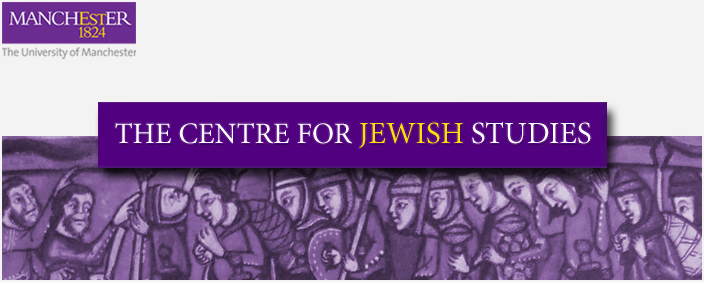10. Women's Zionism
 By no means had women remained in the background as Zionism developed in Manchester. As far back as 1900, there had been a counterpart to the B’nei Zion, called the B’noth Zion (Hebrew "Daughters of Zion"), whose leaders included Miss Bertha Massel, the daughter of Joseph, and a teacher at the local Jews’ School, Helena Weisburg. Hebrew language classes were sponsored but the real emphasis was upon fund-raising for projects such as endowing beds in women’s wards in Palestinian hospitals. It was a popular form of social expression for many Jewish women and by 1902 there were over 220 members, making it the largest single Zionist organisation in Manchester. It went on to last longer than any other single Zionist group.
By no means had women remained in the background as Zionism developed in Manchester. As far back as 1900, there had been a counterpart to the B’nei Zion, called the B’noth Zion (Hebrew "Daughters of Zion"), whose leaders included Miss Bertha Massel, the daughter of Joseph, and a teacher at the local Jews’ School, Helena Weisburg. Hebrew language classes were sponsored but the real emphasis was upon fund-raising for projects such as endowing beds in women’s wards in Palestinian hospitals. It was a popular form of social expression for many Jewish women and by 1902 there were over 220 members, making it the largest single Zionist organisation in Manchester. It went on to last longer than any other single Zionist group.
 In October 1909, the first national conference of Women Zionists took place in Manchester under the chairmanship of Nathan Laski’s wife, Sarah, where it was decided that all groups working for the welfare of women and children in Palestine should affiliate. In 1918, Rebecca Sieff, the wife of Israel, called a meeting in her drawing room in her Didsbury home and the South Manchester Women’s Zionist Society was established. This was one of twelve women’s societies affiliated under a Ladies’ Committee to the EZF, whose representatives met in London the same year to form the Federation of Women Zionists. Other leading members included Vera Weizmann, Miriam Sacher, Miriam Marks, and Marie Nahum; just as it had been with the ‘Manchester School’ husbands, the wives’ institutional Zionism was very much a clan effort. In July 1920, Rebecca Sieff convinced the international committee of Women Zionists to form the Women’s International Zionist Organisation (WIZO), the chief vehicle through which women’s Zionists activities have been channelled in Britain.
In October 1909, the first national conference of Women Zionists took place in Manchester under the chairmanship of Nathan Laski’s wife, Sarah, where it was decided that all groups working for the welfare of women and children in Palestine should affiliate. In 1918, Rebecca Sieff, the wife of Israel, called a meeting in her drawing room in her Didsbury home and the South Manchester Women’s Zionist Society was established. This was one of twelve women’s societies affiliated under a Ladies’ Committee to the EZF, whose representatives met in London the same year to form the Federation of Women Zionists. Other leading members included Vera Weizmann, Miriam Sacher, Miriam Marks, and Marie Nahum; just as it had been with the ‘Manchester School’ husbands, the wives’ institutional Zionism was very much a clan effort. In July 1920, Rebecca Sieff convinced the international committee of Women Zionists to form the Women’s International Zionist Organisation (WIZO), the chief vehicle through which women’s Zionists activities have been channelled in Britain.
 Since that time, other women’s Zionist Societies established in Manchester have included the Higher Broughton and Crumpsall WZS (1925), the Prestwich WZS (1941), and the Cheshire, the Naomi Coleman, and the Didsbury WZSs (all 1948). A Manchester branch of ‘Ziona’, the youth wing of WIZO, was flourishing by 1936, as was a Ladies’ Section of the Mizrachi, which by 1939 had become the HQ of the national Women’s Mizrachi Organisation. In contrast to other regular Societies, there had also been a marked female presence on the committee of the Jewish National Fund since 1924.
Since that time, other women’s Zionist Societies established in Manchester have included the Higher Broughton and Crumpsall WZS (1925), the Prestwich WZS (1941), and the Cheshire, the Naomi Coleman, and the Didsbury WZSs (all 1948). A Manchester branch of ‘Ziona’, the youth wing of WIZO, was flourishing by 1936, as was a Ladies’ Section of the Mizrachi, which by 1939 had become the HQ of the national Women’s Mizrachi Organisation. In contrast to other regular Societies, there had also been a marked female presence on the committee of the Jewish National Fund since 1924.
__________________________
IMAGE AND DOCUMENT CREDITS: Helena Wiseberg (B Williams, Manchester Jewry: A Pictorial History), Daughters of Zion garden party (Frances Guy, Rickie Burman, Bill Williams, Women of Worth; Jewish Women in Britain) , Marie Nahum (B Williams, Manchester Jewry: A Pictorial History) Full reference: Sources.



